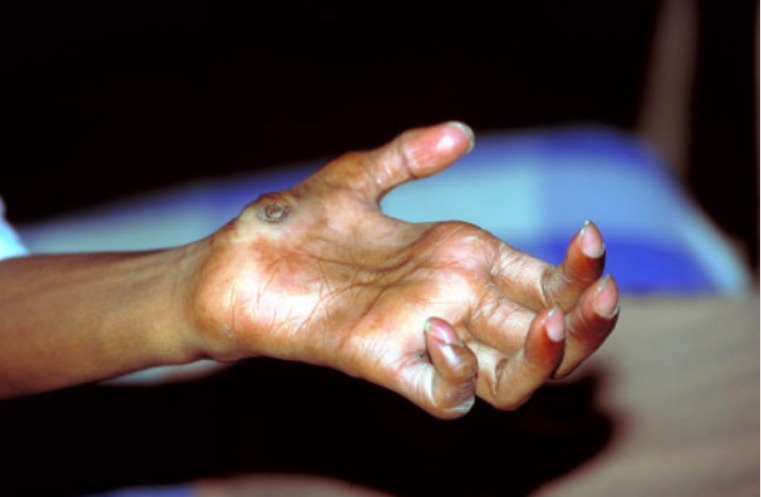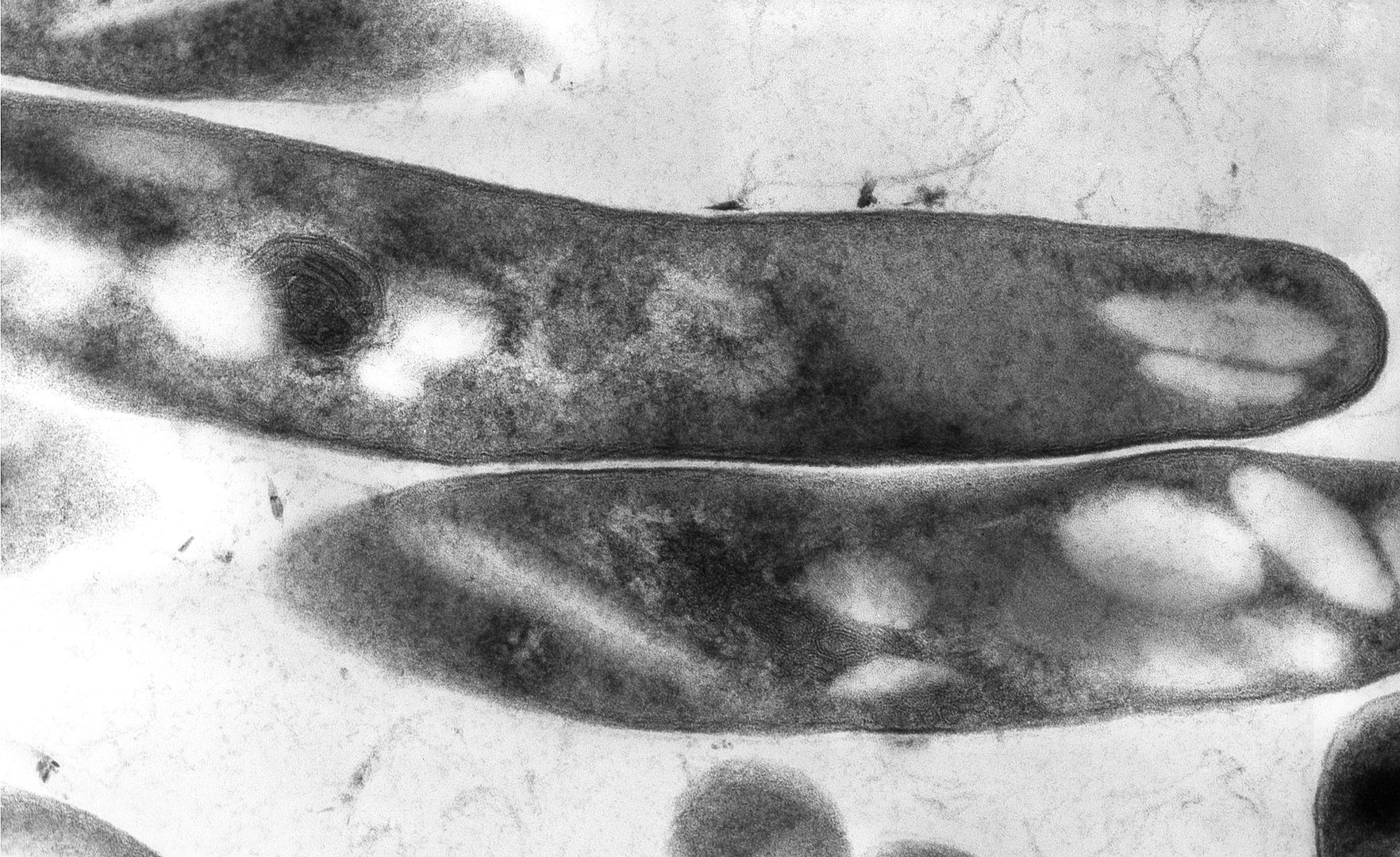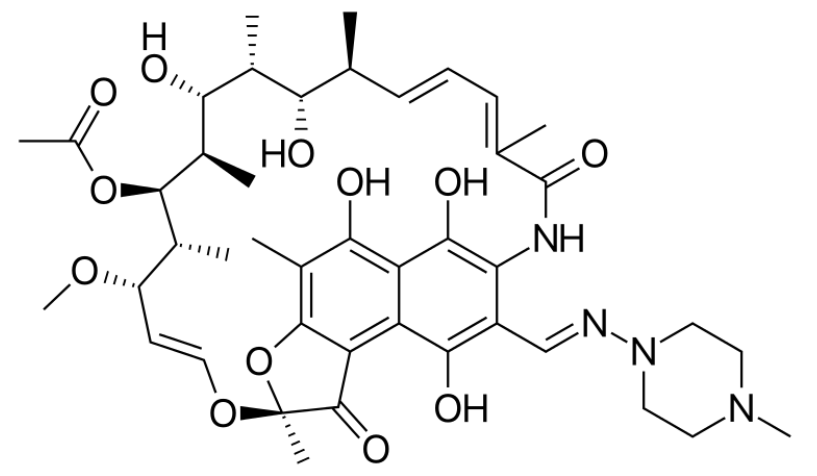Playlist
Show Playlist
Hide Playlist
Mycobacterium Leprae
-
01-07 Mycobacteria.pdf
-
Download Lecture Overview
00:01 <b>So let’s shift now to Mycobacterium leprae, so still </b> <b>atypical infection</b> <b>but this one is associated with leprosy also known as </b> <b>Hansen's disease.</b> <b>Transmission is via direct contact with lesions of an </b> <b>infected person</b> <b>or inhalation of infectious droplets.</b> <b>However, there are very many asymptomatic carriers and there</b> <b> can be a significant contamination of soil.</b> <b>The natural reservoir is this cute little guy in the right, </b> <b>an armadillo,</b> <b>who although slow moving, can potentially shed the organism </b> <b>into soil</b> <b>then exposure occur via aerosolization of that soil.</b> <b>So, what happens in the setting of infection with </b> <b>Mycobacterium leprae?</b> <b>Well, there are two different immunologic pathways which </b> <b>precipitate two different clinical diseases.</b> <b>The first is a TH1 response, or a T-helper 1 response.</b> <b>This typically involves another delayed type </b> <b>hypersensitivity reaction</b> <b>which is associated with the Interferon gamma and macrophage</b> <b> activation,</b> <b>very similar to what we just talked about with MTB </b> <b>infection.</b> <b>Patients with this pathway therefore have tuberculoid </b> <b>leprosy. Good way to remember it.</b> <b>The other pathway however, is Th2 or T-helper 2 response.</b> <b>And this involves use of the humoral antibody system and </b> <b>infection here causes lepromatous leprosy.</b> <b>So, here is the tubeculoid form and the way it looks.</b> <b>These patients will typically have classic skin lesions </b> <b>which are hypopigmented,</b> <b>they're plaques, they're raised, they're papular, they're </b> <b>many times having a flat center</b> <b>or a very demarcated border. You can see at the upper right </b> <b>of the slide, that’s a nose,</b> <b>believe it or not which has lepromatous tubercoloid plaques </b> <b>present upon it.</b> <b>If one biopsies one of those lesions, one will see a </b> <b>significant granulomas just like you would with tuberculosis</b> <b>and with Langerhans cells surrounded by lymphocytes.</b> <b>and with Langerhans cells surrounded by lymphocytes.</b> <b>and with Langhans cells surrounded by lymphocytes.</b> <b>Again, a granulomatous TH1 type response.</b> <b>Nerve damage can also occur, typically, it's peripheral.</b> <b>And it can precipitate and extend to complete sensory nerve </b> <b>loss with enlargement of the nerves themselves</b> <b>and as sensation is lost, autoamputation of the digits also </b> <b>can occur</b> <b>somewhat similar to what you might see in a patient with </b> <b>progressive diabetes.</b> <b>Fortunately, the infectivity of these lesions is quite low.</b> <b>Diagnosis wise, the Lepromin skin test, again, to </b> <b>precipitate that delayed type hypersensitivity, will be </b> <b>positive.</b> <b>Now, the patients with the more classically, meaning classic</b> <b> literature form of lepromatous leprosy,</b> <b>will have many skin lesions and these will be anything and </b> <b>everything - papules, macules,</b> <b>flat-based lesions, they’ll be all over the place and </b> <b>including not just the skin but underlying soft tissues, </b> <b>bones, etc.</b> <b>Patients will have a classic lion-like faces, meaning </b> <b>pronounced jowls,</b> <b>pronounced cheeks as you can see in the picture of the </b> <b>patient on the right.</b> <b>Unfortunately, these lesions are highly contagious because </b> <b>they contain a high load of bacteria.</b> <b>If one then biopsies these lesions in addition to seeing the</b> <b> bacilli, one will also see foamy macrophages</b> <b>but no Langhans cells, so in distinction from the </b> <b>tuberculoid form we just talked about.</b> <b>but no Langhans cells, so in distinction from the </b> <b>tuberculoid form we just talked about.</b> <b>Nerve involvement does occur but it's later on and there's </b> <b>only a patchy sensory loss without any nerve enlargement.</b> <b>As mentioned before, the infectivity is high but in this </b> <b>case, the delayed-type hypersensitivity test,</b> <b>the Lepromin skin test is negative.</b> <b>Treatment for Mycobacterium leprae.</b> <b>Well, it's a long term combination therapy involving at the </b> <b>very least Dapsone and rifampin</b> <b> for the tuberculoid form and those two antibiotics plus </b> <b>clofazimine in the lepromatous form.</b> <b>For tuberculoid form it's a minimum of six months, for the </b> <b>lepromatous form up to two years.</b> <b>Again, long slow growing organisms require long slow </b> <b>administration of the antibiotic therapy.</b>
About the Lecture
The lecture Mycobacterium Leprae by Sean Elliott, MD is from the course Bacteria.
Included Quiz Questions
An immune response produced by which of the following types of T helper cells in response to infection by Mycobacterium leprae produces tuberculoid leprosy?
- Type 1 T helper cells
- Type 2 T helper cells
- Type 3 T helper cells
- Type 4 T helper cells
- Type 5 T helper cells
Observation of "foamy" macrophages and the absence of Langerhans cells on skin biopsy specimens is characteristic of which of the following types of leprosy?
- Lepromatous leprosy
- Tuberculoid leprosy
- Borderline tuberculoid leprosy
- Mid-borderline leprosy
- Borderline lepromatous leprosy
Customer reviews
5,0 of 5 stars
| 5 Stars |
|
5 |
| 4 Stars |
|
0 |
| 3 Stars |
|
0 |
| 2 Stars |
|
0 |
| 1 Star |
|
0 |






